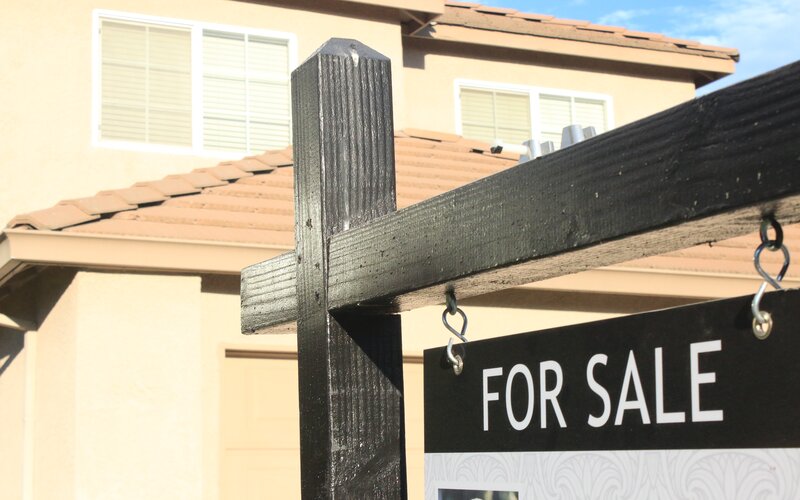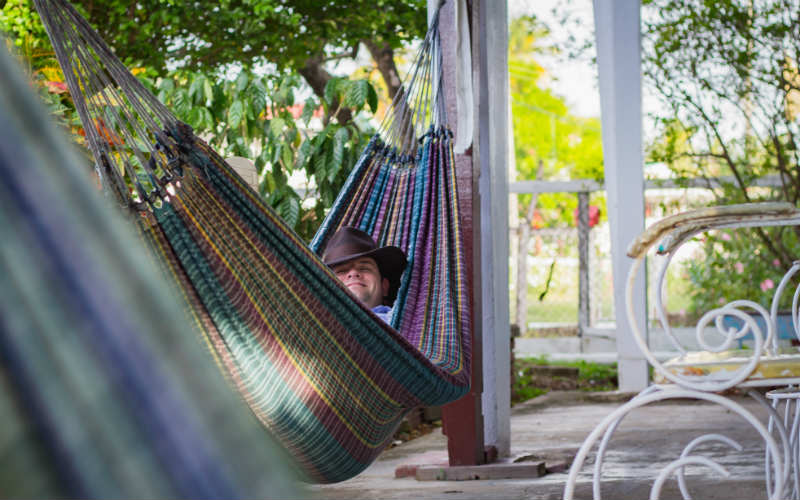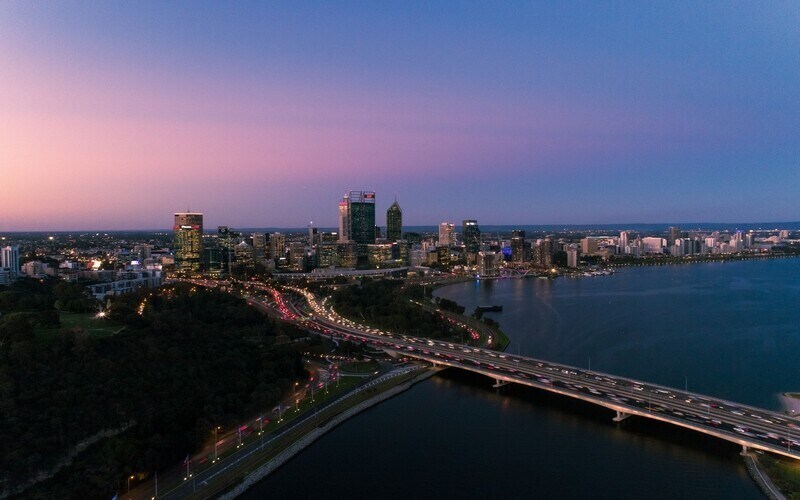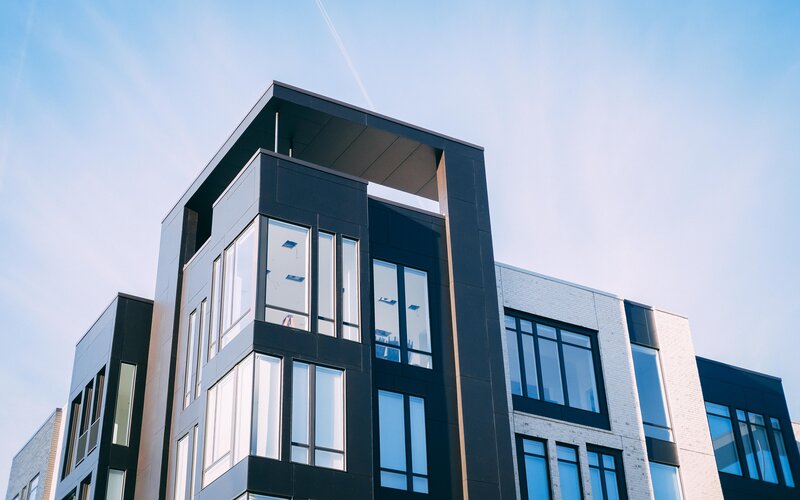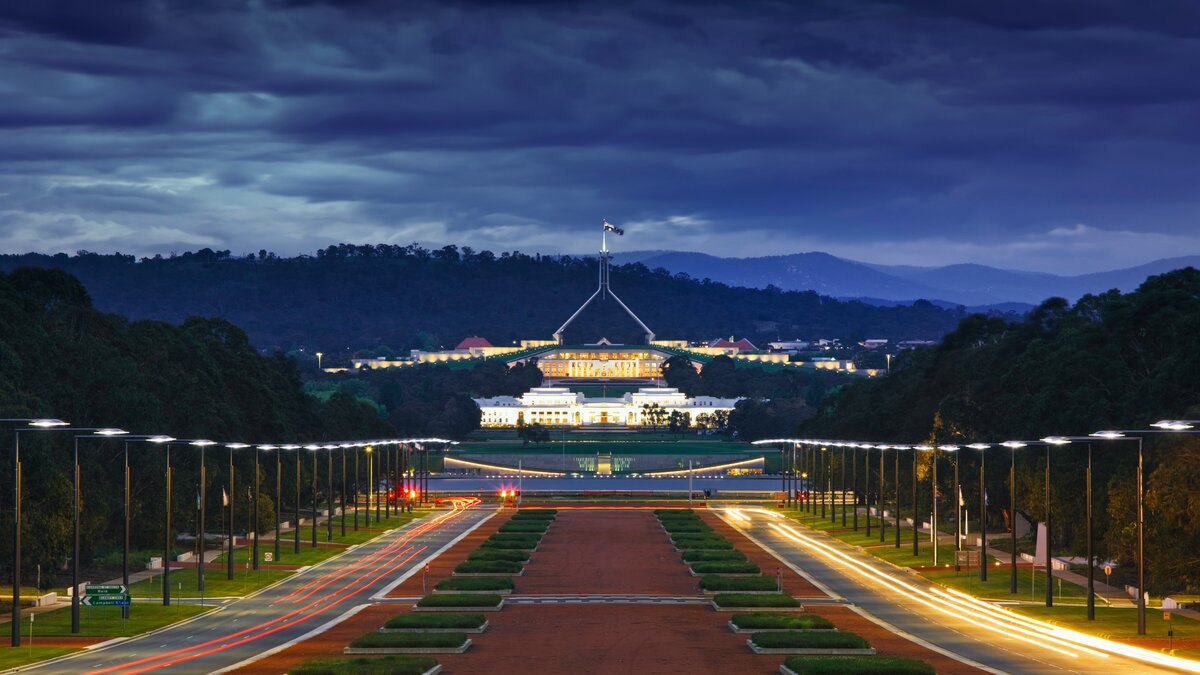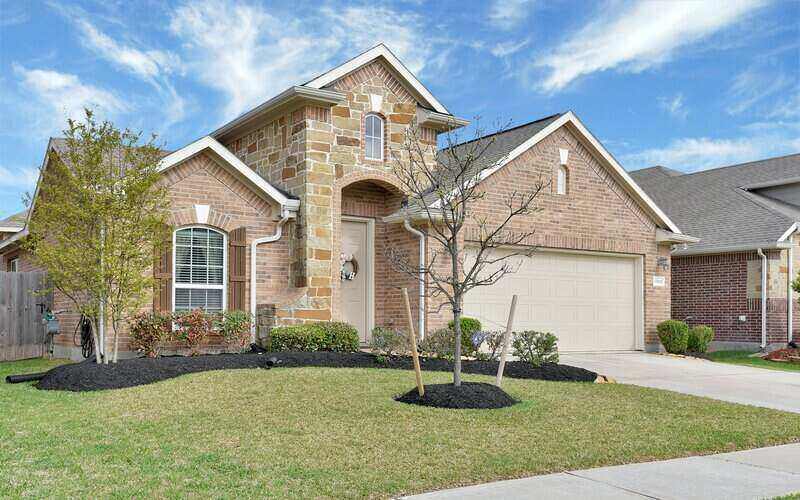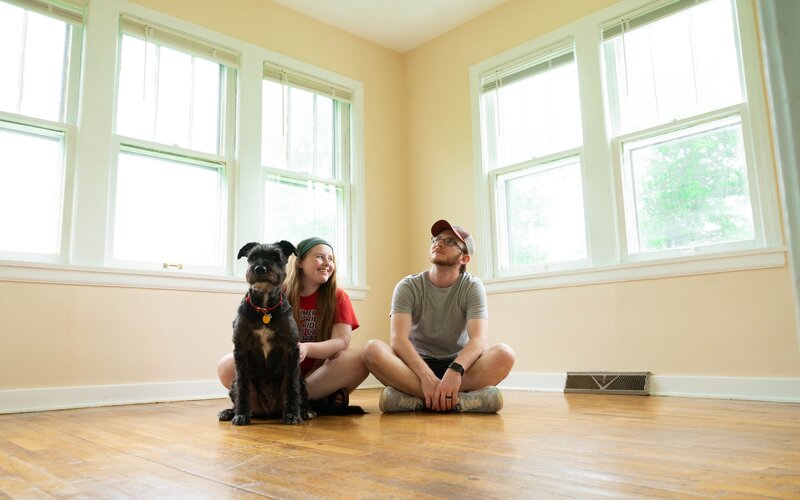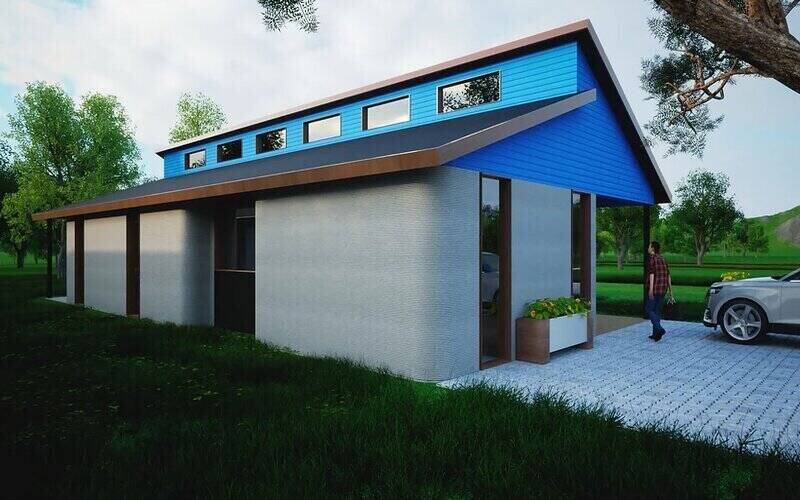For the better part of the past year, COVID-19 lockdowns forced us - and everyone else around the world - to stay at home to stop the spread. For inner-city dwellers, that meant being stuck inside tiny apartments for months on end, unable to enjoy the many perks that inner-city living affords as businesses were forced to shut their doors.
It’s little wonder then that many Australians are shunning overcrowded capital cities in favour of bigger properties in regional areas. Remote working arrangements have certainly helped spark the regional property boom, with many Australians no longer being required to commute into the CBD five days a week.
Lifestyle reasons aside, there’s plenty of financial incentive to move from expensive capital cities (ahem Sydney) to more affordable regional cities where you can get more bang for your buck and potentially enter the property market sooner if you’re a first time buyer.
Buying a home or looking to refinance? The table below features home loans with some of the lowest interest rates on the market for owner occupiers.
| Lender | Home Loan | Interest Rate | Comparison Rate* | Monthly Repayment | Repayment type | Rate Type | Offset | Redraw | Ongoing Fees | Upfront Fees | Max LVR | Lump Sum Repayment | Additional Repayments | Split Loan Option | Tags | Row Tags | Features | Link | Compare | Promoted Product | Disclosure |
|---|---|---|---|---|---|---|---|---|---|---|---|---|---|---|---|---|---|---|---|---|---|
5.79% p.a. | 5.83% p.a. | $2,931 | Principal & Interest | Variable | $0 | $530 | 90% |
| Promoted | Disclosure | |||||||||||
5.74% p.a. | 5.65% p.a. | $2,915 | Principal & Interest | Variable | $0 | $0 | 80% |
| Promoted | Disclosure | |||||||||||
5.84% p.a. | 6.08% p.a. | $2,947 | Principal & Interest | Variable | $250 | $250 | 60% |
| Promoted | Disclosure |
The appeal of regional areas in a global pandemic
The appeal of escaping crowded inner cities for the wide open spaces of regional areas during a global pandemic is as much a health reason as it is a lifestyle one.
For Melburnians, the possibility of enduring another intense lockdown cooped up in their apartments working and living in the same tiny space 24/7 has been enough encouragement for fed up city dwellers to flee. The urban claustrophobia in Melbourne has led to a 44% surge in property listing views for regional parts of Victoria according to Domain Group data - the biggest increase since 2017.
“The interest from prospective home hunters jumped amid the first lockdown and have remained elevated since, up 43.9 per cent on last year,” said Domain's Senior Research Analyst Dr Nicola Powell.
“The demand for a regional lifestyle has clearly been reignited.”
Meanwhile, vacancy rates for rentals in inner-city Melbourne are as high as 14.4%.
Dr Powell said the effects of Melbourne’s stage four lockdowns have “decimated Melbourne’s inner city market” and the number of vacant rental properties has continued to rise, even after restrictions eased.
On the ground, buyers agents are reporting strong demand, short days on market and stiff competition for properties in regional areas. In Orange NSW, local buyer’s agent Matt Ward from Aspect Buyers Agency says there’s been an increase in demand for rural lifestyle blocks, particularly those closer to larger regional centres.
“We’re seeing a lot of new entrants into the market as more people realise that the need for space, a side income and somewhere to escape to on the weekend can all be met in the one property,” said Mr Ward, whose buyer’s agency specialises in rural property and farms.
“The COVID-19 situation brought to people’s attention the issue of food security and their inability to grow their own, so demand for properties with this potential have remained keenly sought after.”
Michael Pallier, managing director of Sydney’s Sotheby’s International Realty summed up the COVID-19-induced regional exodus nicely in his quote to the New York Times: “The first wave after the pandemic was, ‘I’ve got to buy toilet paper.’ Wave two was, ‘I’ve got to get away from a dense population'“.
Of course, migrating from the capital cities to regional areas is hardly a new phenomenon. The recent ‘Big Movers Report’ conducted by the Regional Australia Institute found that capital cities have steadily been losing more people to regional areas between the last two national censuses in 2011 and 2016. Sydney was the biggest loser, with over 139,471 people moving to regional areas, followed by Melbourne which lost over 112,728 people, and Brisbane (109,670).
See also: Regional suburbs where it’s cheaper to buy than rent
McGrath Estate Agents founder John McGrath says as internal migration has become more popular, regional areas have grown and developed to accommodate this.
“Many have become more attractive, offering greater lifestyle amenities and more employment than previously,” Mr McGrath said.
In fact, a recent report by economics consultancy, Polis Partners found many regional cities were outperforming their capital city counterparts on a number of economic growth measures like population change, business and jobs growth and investment in residential and commercial construction.
It’s this, combined with significant government investment and relocation grants that’s given the push many Aussies needed to finally make that sea or tree change.
“In the COVID-19 era, regional areas have taken on a special appeal – the desire for a simpler life,” Mr McGrath said.
“In times gone by, city escapees typically moved to satellite towns that provided a tolerable daily commute. But today’s work-from-homers have the freedom to go further afield; and getting in and out of the cities has never been easier due to new freeways and expanded air services.”
Regional property hotspots 2021
Spokesperson for the Real Estate Buyers Agents Association (REBAA) Matt Knight said regional cities within commutable distance from the major capital cities are booming and likely to continue doing so in 2021.
“Naturally beautiful locations within desirable coastal and green precincts a few hours from each of the capital cities are experiencing migration booms currently as the masses discover working from home and commuting 1-2 days per week,” Mr Knight told Savings.com.au.
“This trend is quite new and likely to continue into next year at least until COVID international travel restrictions give people reasons to spend money overseas or return to five day-a-week commute routines.”
Regional coastal cities aren’t the only ones likely to benefit: Mr Knight said inland regionals with evergreen workforces (like health and the armed forces) are also likely to improve.
In his McGrath Report 2021, Mr McGrath highlighted a number of regional areas Aussies looking to make a tree or sea change will have their sights set on:
See also: The best and worst performing regional housing markets in 2020 revealed
Byron Bay and Tweed Shire
Besides being a hotspot for celebrities, hippies and influencers alike, Byron Bay is also fast becoming a go-to spot for relocators.
According to CoreLogic data, house prices in the Byron Shire (which includes Byron Bay, Bangalow and Brunswick Heads) rose by 6.6% over the 12 months to August 31, 2020. The median property value is now higher than Sydney at $1,090,605.
Since 2015, Byron Shire has outperformed Sydney with 31.6% growth compared to 9.7%.
Up north in the Tweed Shire, houses are more affordable but values are still growing rapidly, a sign of a hot market, with 5.7% annual growth to a median price of $665,531 and 27.9% over five years.
Central Coast
The Central Coast is another booming spot for regional relocators according to the report.
“On the Central Coast, good quality homes are selling for 10% more than in 2019 due to a dramatic increase in demand from Sydney over the September 2020 quarter,” Mr McGrath said.
“Acreages and renovated beach homes in Wamberal, Terrigal, Avoca and Killcare are especially in demand.”
The quiet little village of Noraville in particular is one spot that Mr McGrath believes will boom next year.
“With the pandemic showing everyone how easy it is to work from home and the new NorthConnex lopping 20 minutes off your trip to town, you’ll make great money over time securing a cottage in this charming seaside suburb for the price of a one-bedroom apartment in Sydney,” Mr McGrath said.
Illawarra/Wollongong
A combination of revitalised infrastructure, new amenities and jobs are continuing to support house price growth in the Illawarra. According to the report, several regions throughout the Illawarra recorded impressive capital gains in the year to August 31 2020, including Wollongong (12.7%), Kiama (10.3%) and Shellharbour (7.9%).
Mr Knight, who also runs Precium, a buyers agency in Wollongong, says he’s seen a wave of buyers keen to leave the city since travel bans were lifted with many attending open homes en masse.
“The vibe seems to be 'Carpe Diem' - seize the day,” said Mr Knight.
“Quality areas are still attracting quality buyers. Well-styled first home and boomer-suitable homes are selling quickly.”
In particular, little lifestyle gems like Thirroul are expected to take off in the next couple of years according to Mr McGrath.
“Sitting on the seaside, only a few kilometres from Wollongong and a very easy commute to the big smoke, this lifestyle will become more in demand from savvy locals, Sydney executives and nearby empty nesters in search of the ultimate sea change,” Mr McGrath said.
Geelong
Geelong was a consistent standout as a hotspot for regional relocators among the experts I spoke to for this article.
Only an hour’s drive from Melbourne, Geelong is close enough to the city for those who still need to commute into the CBD for work once or twice a week.
According to the report, Geelong has recorded a 33.6% rise in house price growth since 2015 but is still very affordable, with a median house price of $555,000.
Gold and Sunshine Coasts
The Gold and Sunshine Coasts have been particularly popular among Sydneysiders and Melburnians, with sales off video inspections common.
“The Sunshine Coast, in particular, is benefiting from this trend with the lowest number of listings in a decade resulting in exceptional prices for prestige homes in Sunshine Beach and waterfront apartments in Noosa Heads sold to interstate buyers,” Mr McGrath said.
Burleigh Heads on the Gold Coast is gaining popularity among buyers, with major developments earmarked and a strong appetite for off-the-plan apartments.
“A 33-apartment luxury residential tower released in March 2020 was 80% sold on its first day,” Mr McGrath said.
Tips for buying regional property
Whether you’re a savvy investor looking for your next opportunity or a fed-up city dweller wanting to make a sea or tree change, there are many things to consider before taking the plunge.
Consider the local economy and employment opportunities
Regional property markets are notorious for being more volatile than capital city markets because many regional areas are reliant on one industry (just take a look at what happened in Perth when the mining bubble burst). Mr Knight said buyers need to take this into account.
“Buyers should understand the local economy and be aware of the risk of "one-horse" towns that rely too heavily on one or few industries such as mining. Larger more diverse economies mean less risk of a drastic downturn,” Mr Knight said.
Look for qualities that make the property a good investment
Whether you’re an investor or not, it pays to think like one especially when buying regional property.
“New infrastructure projects such as major transport, work or heath facilities are great for short-term uplift in values and creating ongoing resilience. The key to ongoing capital growth is constrained supply such as beachfront or quality views, or even walk to a quality coffee/cafe precinct. The less of something there is, the more valuable it tends to become,” Mr Knight said.
If you are an investor, rental vacancy rates are your best friend.
“Study rental vacancy rates like a hawk. These are the key to low risk landlording.”
Mr Knight expects investors will flock to regional areas in 2021.
“Future trends will also include investor-led growth for any towns with sustained strong rental markets because interest rates are so low that investors are currently looking for alternatives to cash in the bank,” Mr Knight said.
“Initial fears of a property crash meant investors have been on the sidelines all year. My pick is that 2021 will see the return of the investor to quality regional markets as cities continue to work through COVID impacts.
“Only select regional markets will see gains and investors should do thorough due diligence to ensure they buy quality.”
See also: What makes a good investment property?
Real Estate Buyers Agents Association (REBAA) president Cate Bakos said buyers should buy something with resale ability just in case the move doesn’t work out.
“Don’t buy a property that’s on a main road, or is too odd or quirky, buy something that’s popular with the locals.”
Commutability
Even though COVID-19 has allowed many of us to work remotely, there will still be a need for many to commute into the capital cities for work at least once or twice a week.
Ms Bakos said buyers should ask themselves if they can deal with a long commute.
“Be mindful that if you do have to commute to a major city for work, whether it be one day per week or five days per week, that you can tolerate the commute journey and all that goes with the extended travel time,” said Ms Bakos.
Easy commute into the nearest capital city will always be a priority for buyers, so it’s important to look for property located nearby a major highway or railway line.
Buy a property that can accommodate visitors
Ms Bakos said too many regional relocators end up moving back to the city because they can’t stand being so far from loved ones.
“Assuming that friends and family will visit regularly is a common mistake,” she said.
“One of the main reasons cited by these buyers why regional moves don’t work out is often because they miss family and friends too much. Make sure you buy a property with an extra room or two so that guests can stay for the weekend or longer.”
She also said would-be buyers unfamiliar with their target region should consider renting an Airbnb for a week or two to ‘test drive’ their decision.
“Be mindful that if you do have to commute to a major city for work, whether it be one day a week or five days a week, that you can tolerate the commute journey and all that goes with the extended travel time.”
Affordability
One of the biggest things regional property has got going for it is how affordable properties are there, compared to their capital city counterparts. However, if an area is too affordable, it can be a sign of low demand (which is good if you’re a buyer because it means you have more negotiating power, but could make it harder to sell).
Keeping an eye on property data using RP data and analysing value growth can tell you which areas are up-and-coming.
Savings.com.au’s two cents
Moving from a capital city to a regional centre is a pretty big decision and the motives will vary for everyone, so it’s important to think about your reasons for moving and if it’s something you’re prepared to commit to for the long-term.
One of the most important things to consider when buying regionally is the makeup of the local economy and what job opportunities there are. If it’s a one-trick town that relies solely on one industry like mining for example, buying property there could be risky (again, Perth’s mining boom and subsequent bust is a perfect example).
It’s also important to consider the infrastructure like transport, roads, and anything else that will boost the lifestyle: if money is being poured into this it’s often a sign that it’s an area of growth. Being close to local amenities like shops, schools, universities and hospitals matters just as much in regional centres as it does in the capital cities, as well as having good access to internet particularly in more remote parts.
If you’re struggling to enter the property market in the capital cities, regional areas are an affordable alternative for first home buyers, and there’s already evidence FHBs are considering making the move further afield to get a foot on the property ladder. For those who don’t want to live regionally but still want to take advantage of the booming conditions, rentvesting (in this case, buying a regional investment property but continuing to live and rent in the capital cities) could be worth giving some thought. We strongly recommend speaking with a financial adviser who can give you personalised financial advice on this.
Photo by Josh Withers on Unsplash

Ready, Set, Buy!
Learn everything you need to know about buying property – from choosing the right property and home loan, to the purchasing process, tips to save money and more!
With bonus Q&A sheet and Crossword!





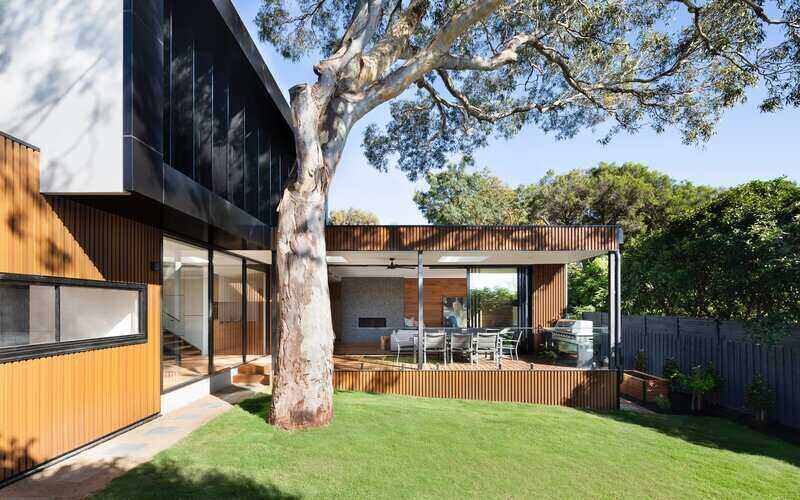
 Rachel Horan
Rachel Horan
 Emma Duffy
Emma Duffy